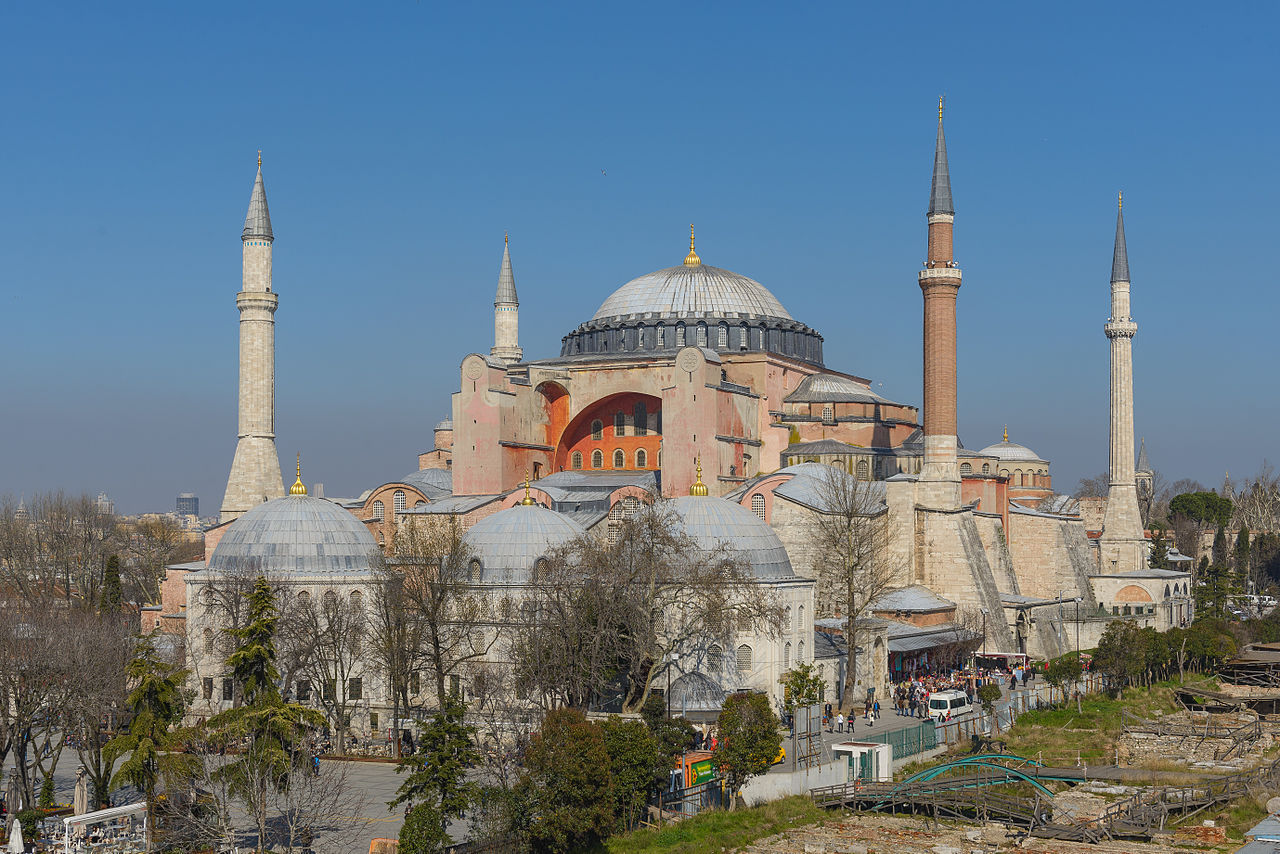
This week in 537, eastern Roman emperor Justinian I finished construction of the Hagia Sophia: the great cathedral of his capital, Constantinople. Upon completion and for centuries thereafter, it was the largest building in the world. Justinian’s realm was the remainder of the Roman Empire: the original mega-state’s eastern half, which survived the fall of the West and which we call the Byzantine Empire. And the Hagia Sophia became the central cathedral of the eastern region of the Roman Christian Church, not to mention the seat of the Patriarch of Constantinople. Eventually, the two great sections of the church broke into the Eastern Orthodox Church and the Roman Catholic Church — the latter led by the Patriarch of Rome, a.k.a the Pope. The Hagia Sophia remained the central cathedral of the Eastern church and the Byzantine Empire until 1453, when Constantinople fell to Muslim invaders and became the capital of the Turks’ new Ottoman Empire. The conquerors turned the cathedral into a mosque and added its now-iconic minarets: the slender towers you see on many mosques, used for the call to prayer. In the 1930s, however, the new, secular state of Turkey closed the mosque and transformed it into the Ayasofya Muzesi, or the Museum of the Hagia Sophia. You can visit the museum to this day, in Istanbul: the Turkish name for Constantinople.
Photo by Arild Vagen, used with permission under CC BY-SA 3.0

0 Comments